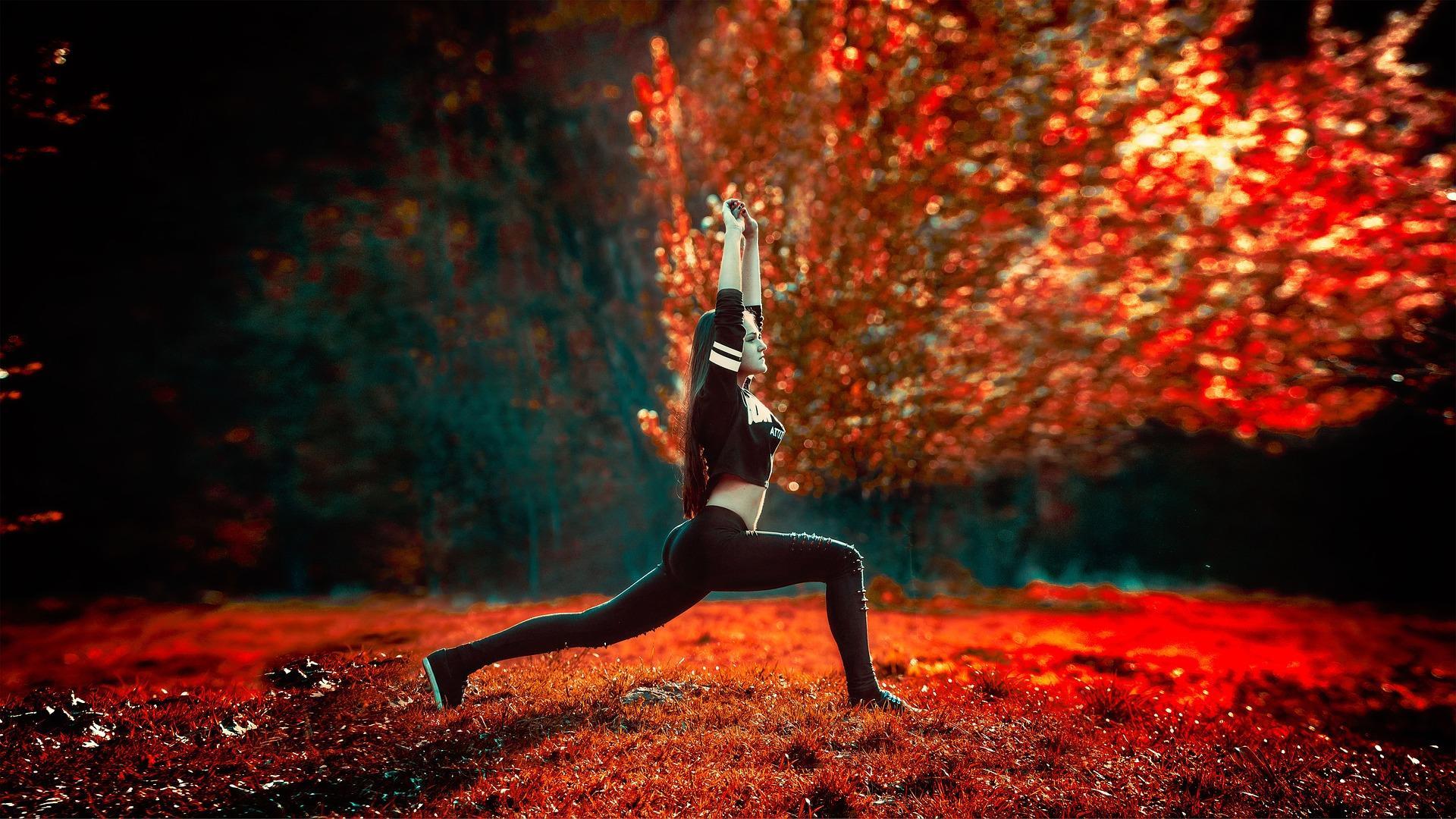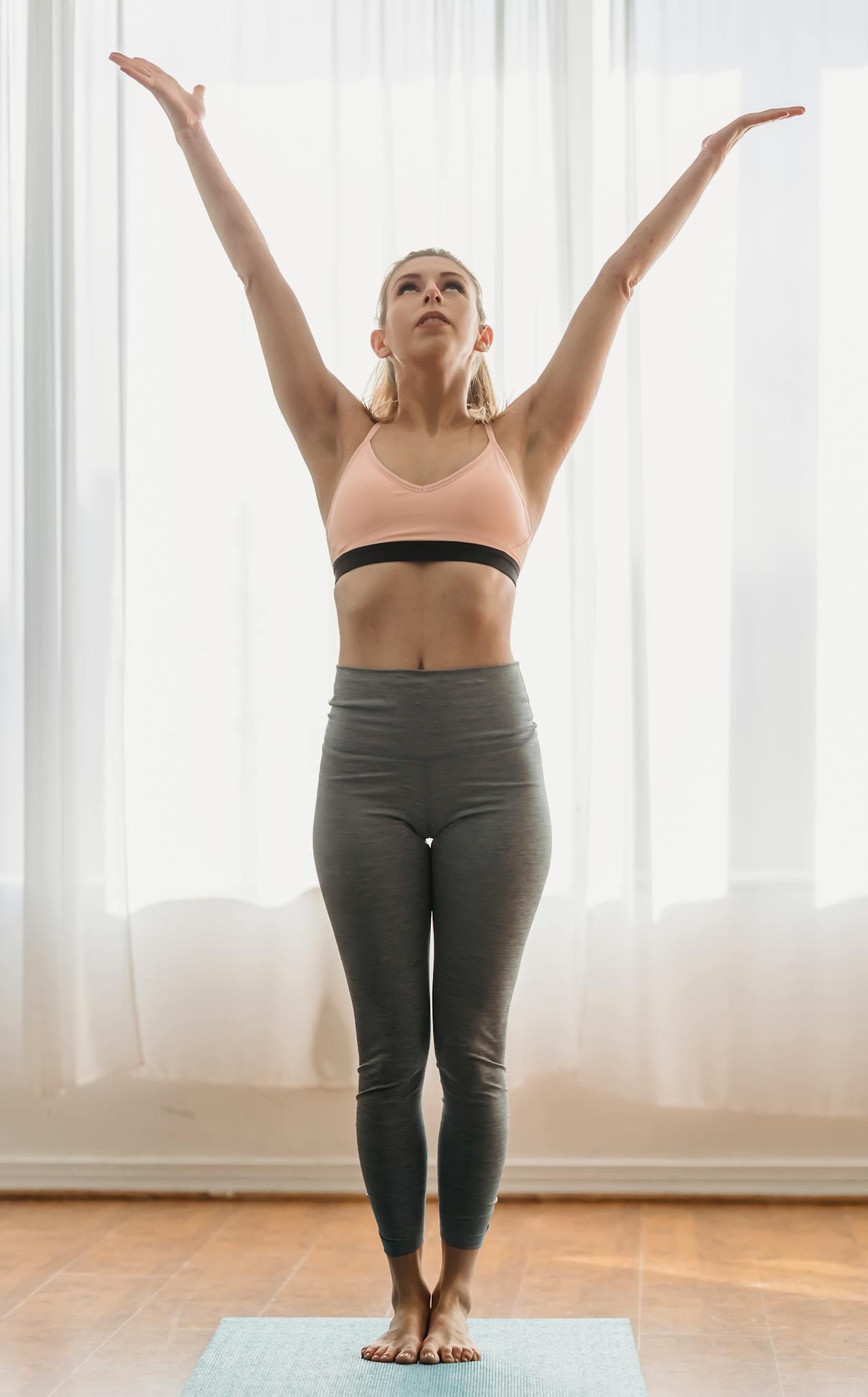Key Takeaways
- A typical hatha yoga session lasts about an hour, but beginners' classes may be shorter.
- The session usually starts with poses, followed by breath work and meditation.
- Poses are sequenced from standing to kneeling, seated, and lying down, ending with savasana.
- Variety in sessions keeps them engaging, but consistency is key in restorative yoga.
Hatha yoga isn't just about physical postures—it also promotes balance, flexibility, and overall well-being.
That's why it’s important to carefully select and sequence poses to maximize benefits, from improving digestion to relieving arthritis. So, how do you create the perfect session for beginners, intermediates, or advanced practitioners?
Let’s explore the best practices for sequencing hatha yoga classes.


What is Hatha?
Hatha fundamentally refers to yoga postures, meaning that your favourite type of yoga—whether it’s Ashtanga, Iyengar, vinyasa, or power yoga—falls under the hatha umbrella.
By definition, hatha yoga focuses on the physical aspect of practice; the word "hatha" itself means ‘force,’ ‘effort,’ or ‘willfulness.’ However, this doesn’t mean that every hatha workout must be intense. With a wealth of poses to choose from, you can design a workout for virtually any purpose.
Many yoga teachers do just that!
For instance, consider the difference between a beginner's yoga class and an advanced session. If you’re new to yoga, you need to understand how to ‘move from your core’ before progressing to more demanding poses. In beginner classes, much of the focus is on the teacher’s guidance—how to move, where to place your hands, and so on. At this stage, concepts like breath control and mind-body connection are still developing.
On the other hand, more advanced practitioners have the experience needed to let their instructor introduce more elaborate poses—ones that beginners might struggle with.
That’s one reason why sequencing yoga classes is so important.
Hatha Yoga Session Basics
A hatha yoga session generally runs for an hour but beginners classes may last only 30 minutes and some yoga studios offer ‘yoga during lunch’ sessions that may last only 15 or 20 minutes!
The general outline of a hatha yoga session, regardless of level or duration, starts with the physical aspect, meaning the poses. That exertion better prepares us for the more subtle breath work and energy flow.
The tranquillity we earn from breath awareness and energy flow, in turn, prepares us for a deeper state of meditation.
A general rule of thumb for hatha yoga suggests starting with the standing poses – warrior poses, gate and tree poses, moving down to the kneeling poses such as ‘cow and cat’ and downward-facing dog.
The seated poses would be next, among them the ‘bound angle’ and ‘cow face’ poses – and let us not forget ‘crane’ and ‘peacock’! And then, we arrive at the lying down poses, with ‘cobra’ and ‘sphinx’ being very similar.
Finally, savasana! Enjoy your ‘corpse’ pose; you’ve earned it!
Savasana or corpse pose is usually an ending pose to relax and cool down after your session.
Some yoga teachers have preferred poses that they will include in every session – the crescent lunge is a particular fav of mine, for example.
However, if you are currently undergoing yoga teacher training or hope to soon, you should always be sure to mix things up a little bit so that your students do not become bored with the same sequences in every class.
By some estimates, there are thousands of yoga poses to choose from, meaning your yoga sessions need never be the same.
Just one little exception to that point: if you are leading restorative yoga sessions, you should probably keep things pretty much the same, seeing as that particular yoga sequence is meant to serve a particular purpose!
With these general guidelines in place, let’s take a look at some targeted hatha sequences.

A Good Place to Start: Sun Salutation Sequences
Many yoga teachers like to begin their class with a sun salutation; it is a great way to warm up, stretch and work major muscle groups. Sun salutations are particularly effective in vinyasa flow classes and also in power yoga classes because each movement flows into another.
A benefit of these Suria Namaskar mantras – the Sanskrit name for sun salutation sequences is that they coordinate breath with movement. For instance, as you sweep your arms upwards in the ‘raised arm’ pose, a deep inhale feels inevitable because your ribcage naturally expands on that move.
Likewise, as you flow into a forward fold, exhaling is inevitable; it is almost as though you were compressing a bellows.
While practising the sun salutation, it seems as though your body’s positions mirror your breath’s inward and outward cycles.
Start to take yoga classes near me today!

That is rather the point of this sequence. When done correctly, each ‘reaching’ move is done on an inhale and each release is done on the exhale.
There are many ways to sequence a sun salutation but most yogis agree that one should start in mountain pose (pranamasana) and then flow into ‘upward salute’ or hasta uttanasana, its traditional name.
The rest of the sequence is a follows:
Stand tall with feet together, hands at your sides.
Inhale and raise your arms overhead, palms touching.
Exhale and fold forward, hands toward the floor.
Inhale and lift your torso halfway, hands on shins or fingertips on the floor.
Exhale, step or jump back into a plank and lower down, elbows close to your body.
Inhale, press through your hands, lift your chest, and keep thighs off the ground.
Exhale, lift hips up and back, forming an inverted "V" shape. Hold for a few breaths.
Inhale, step or jump forward between hands and lift halfway.
Exhale and fold forward completely.
Inhale, rise up with arms overhead.
Exhale, lower arms to sides, completing the sequence.
This sequence is more commonly known as a Type A Sequence, from which you may logically infer that there must be a Type B.
Type B substitutes the ‘forward bend’ pose with the chair pose, which looks like the yogi is about to sit down on a chair, albeit with arms raised high. The Type B sequence includes the forward bend but calls for the yogi to grab their toes. It also includes warrior poses.
Of course, nothing says you cannot include other asanas in your warmup sequence; some yoga instructors may insert a boat pose (navasana) or a seated forward bend.
The important takeaway of sun salutations is that they are meant to open the body up and coordinate movement with breathing; to ready the mind and body for deeper reflection of the fundamental yoga philosophy: that the mind, body and spirit are one.

Sequencing a Yoga for Beginners Class
Using the Sun Salutation sequence is a great way to start your class – indeed, some instructors base their hour-long class on these 12 asanas alone, but you should probably add a few asanas to make each session complete.
The average hatha yoga session includes between 20 and 30 asanas; about half of them should be dynamic.
Hatha yoga is a ‘yang’ yoga, meaning that there is more movement involved than, say in a yin yoga class. Each session should start by working the body. Once the body is ‘opened’, warmed up, practitioners can focus exclusively on breathing which, in turn, leads to a meditative state.
After your sun salutation, deciding which asanas to include in your sequence really depends on the results you are aiming for.
If you are looking for general flexibility and other benefits of yoga, you would use a combination of standing (except for yin yoga), hand-and-knees and seated poses, culminating in a series of laying down poses. Just make sure the poses flow into one another!
In this table, we’ve listed a sequence of asanas to try; naturally, you may replace some of these poses with your favourites.
Hatha Yoga Sequence for Beginners
| Name | Target Area(s) | Notes |
|---|---|---|
| Surya Namaskar or Sun Salutation | works your entire body | a series of 12 poses to warm the body |
| Standing Poses | The focus is on strengthening major muscle groups and building balance | Warrior poses, Tree poses, Gate poses, Extended Side Triangle and others |
| Hand-and-knee postures | work your core as well as lower joints | Camel pose, cow-and-cat; upward and downward facing dog; plank and side plank. |
| Seated postures | gain flexibility | head-to-knee, seated forward bend, bound angle, cow face pose |
| Lying down poses | work your abs and back | On your stomach: Sphinx, Cobra, Pigeon, Bow On your back: Bridge, Fish, Plow |
| savasana corpse pose | resting your entire body | Namaste! |
What About the Sun and Moon?
Somehow, word has gone around in yoga circles that ‘hatha’ is actually the melding of two words: ‘ha’ for sun and ‘tha’ for moon, implying that hatha yoga is a balance between solar and lunar energies. Or, if you wish, between yin and yang.
Unfortunately, that theory is not correct.
While ‘ha’ does indeed represent ‘sun’, it is not the only word for the sun, nor is it meant to represent the sun in ‘hatha’. Likewise, ‘tha’ may well stand for ‘moon’ but Sanskrit texts give no indication of such.

While the practice of hatha yoga is millennia-old, focus on the physical is a relatively new aspect of the discipline and, focusing one’s efforts solely on balancing the physical and mental aspects of yoga leaves out the most important aspect, the spiritual.
Really, it is more than a matter of semantics.
According to Swami Svatmarama, spending all of our energy trying to balance two forces constantly in flux overlooks the fundamental philosophy of yoga.
He averred that we should instead focus and guide the mind so that the body’s energy can flow as it should.
Embracing the True Essence of Hatha Yoga
As we've explored, hatha yoga is far more than just physical postures or balancing opposing forces. It’s a holistic practice that unites body, mind, and spirit, guiding you towards greater awareness and inner peace. Whether you're a beginner or an advanced practitioner, understanding the deeper purpose of your practice will enrich your yoga journey.
As you move forward, remember that yoga is a personal experience, one that evolves with you over time. Embrace the challenges, enjoy the progress, and most importantly, stay connected to the essence of what yoga truly represents. Namaste.















